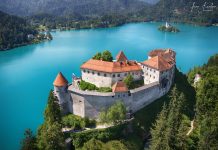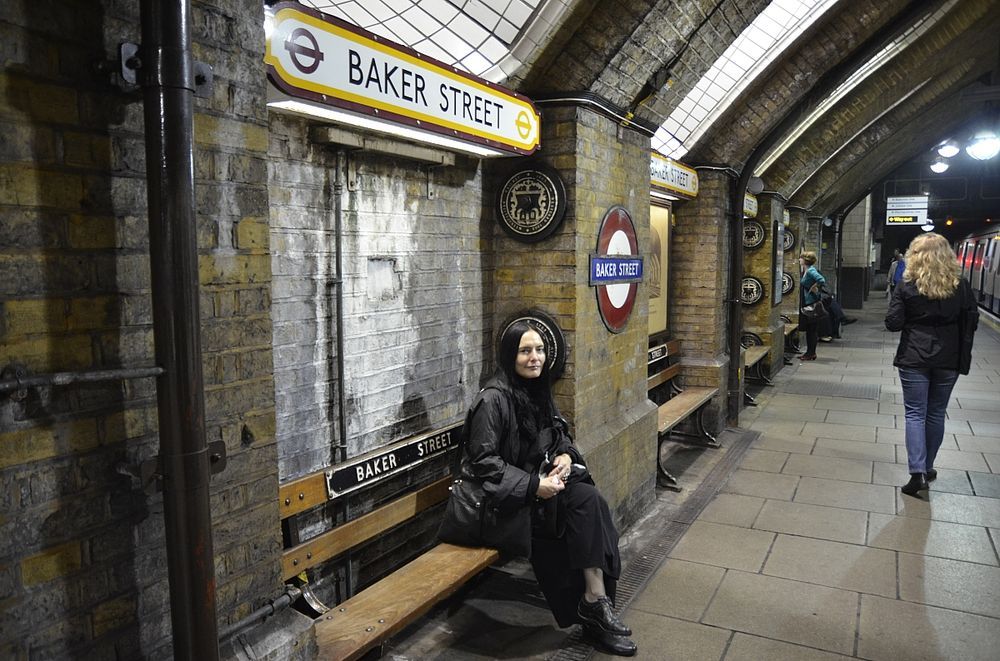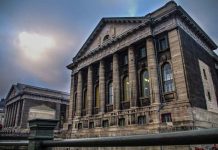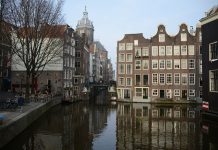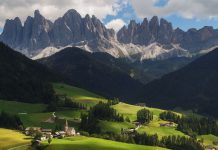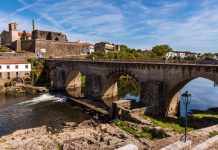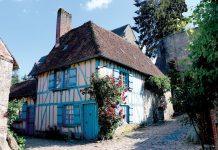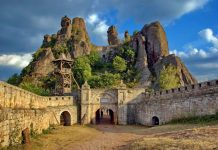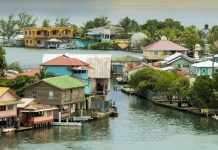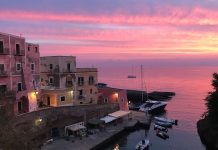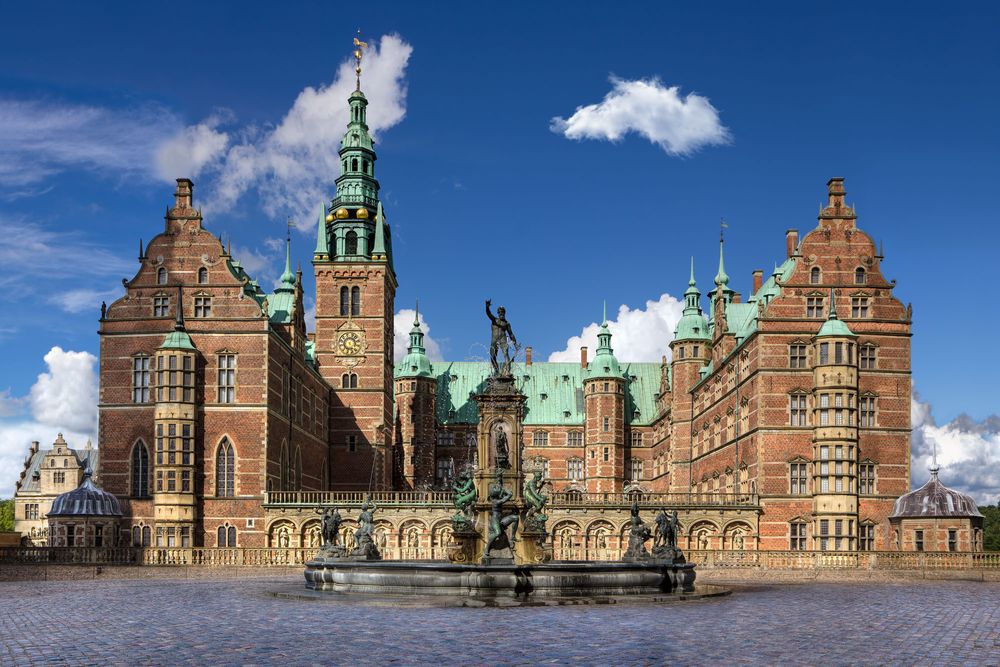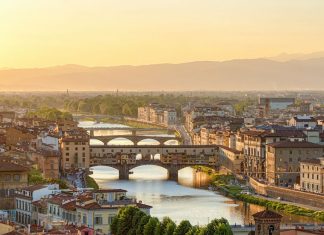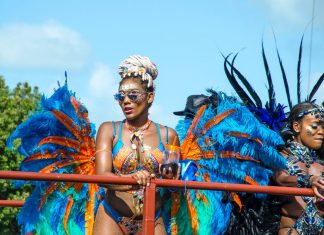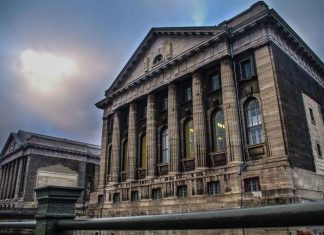Frederiksborg Castle built around 1600-1625 by King Christian IV (1577-1648 – ruled Denmark and Norway 1588-1648) – and best known as the great builder of Copenhagen. The castle is a cultural treasure chest and covers two decades of architectural glory as well as being a national monument – placed on 3 small islets on Frederiksborg Castle Lake just in the centre of Hillerød Town.
King Frederik II and King Christian IV Castles
King Frederik II (King from 1559-1588 – ruled Denmark and Norway) acquired the castle estate called Hillerødsholm in 1550 and renamed it Frederiksborg Castle – to get the right to use the wide hunting fields in north Sealand and especially the woodlands around the town of Hillerød. During his reign he restored the estate on the islets of the town lake – and used the premises as a Royal residence.
At the same time King Frederik II was completing the building of Kronborg Castle that also was a Royal residence for the King and his family. At the former Frederiksborg Castle – his son the later King Christian IV is born (1577-1648 – ruled Denmark and Norway 1588-1648) – and throughout his childhood he had great affection for the old castle estate and birthplace. But despite the admiration for the historical buildings he decided in 1599 to demolished the old estate and replaced it with one of the finest and biggest Renaissance castles ever seen in northern Europe – which took him more than 20 years to create and build. Both Kings were great castle builders during there period on the Danish throne and had a grand influence on the architecture of the Royal buildings from this era.
King Frederik II and his son crown prince Christian – later King Christian IV on one of the gobelin series at Kronborg Castle – and woven by Hans Knieper from Antwerp. The tapestries from 1578 can be seen in the “Knights Hall” at Kronborg Castle. Both Kings were great castle builders.
Hillerødsholm
Painting from around 1584 of King Christian IV hunting at the premises of the former castle estate Hillerødsholm – later named Frederiksborg Castle – when his father King Frederik II acquired the entire property and turned it into a Royal hunting estate and Royal residence. Painting from Gripsholm – Sweden.
King Christian IV and Frederiksborg Castle
King Christian IV started to build a new castle around 1600 – in French and Dutch Renaissance style on the islet where his father’s former Frederiksborg Castle was placed on the Castle Lake. The architectural work was conducted by the Flemish architects Hans and Lorenz van Steenwinckel – as the Dutch Renaissance was the preferred style of King Christian IV and used in many of his new buildings in Copenhagen.
At the same time the King was planning to build his little summer residence – Rosenborg Castle – in the outskirts of Copenhagen. The new Frederiksborg Castle was designed as a three-wing property – a chapel wing and a King and Princess’s wing. The 4-story high complex with the wings was completed around 1610 and the marvelous decorated chapel was completed in 1618. The entire Frederiksborg edifice was completed about year 1620 with a primitive but beautiful park area on the other side of the castle premises.
King Christian IV and Queen Anna Catherine
Painting from 1612 of King Christian IV and his Queen Anna Catherine of Brandenburg (1575 – 1612) was the first royalties to move into the new part of Frederiksborg Castle. The King had 6 legitimate children with the Queen. The fist child was crown prince Frederik – later King Frederik III – who introduced the absolute monarchy in Denmark in 1660.
The biggest Renaissance edifice
This is probably how the Danish painter P.C. Skovgaard imagined Frederiksborg Castle – in its splendid architectural beauty – when it was completed around 1620. The painting was painted in 1841 and is exhibited at the Museum of National History at Frederiksborg Castle. The castle is the finest and biggest Renaissance edifice ever seen in northern Europe.
Crowning of Danish Absolute Monarchs
Beside of being a Royal residence for several monarchs up to the 19th century – the palace was used for many ceremonial events – and from 1671 to 1840 all Danish Absolute Monarchs were crowned and anointed in the Chapel at Frederiksborg Castle – except for King Christian VII (1749-1808) – ruled Denmark and Norway 1766-1808). Also the Treaty of Frederiksborg was signed here in 1720 that ended the Great Northern War between Sweden and Denmark-Norway from 1700-1721.
Crowing and Anointing of Kings
Painting by Michael van Haven of the holy crowing and anointing of King Christian V (1646-1699 – ruled Denmark and Norway 1670-1699) and his Queen Charlotte Amalie of Hesse-Kassel in the chapel of Frederiksborg Castle June 7th 1671. This was the first crowing ceremony at Frederiksborg Castle and the painting can be seen at Rosenborg Castle.
The last Crowning Ceremony
The last crowning ceremony in Denmark and at Frederiksborg Castle Chapel was the coronation and anointing of King Christian VIII (1786-1848 – King 1839-1848 of Denmark and King of Norway until 1814) and Queen Caroline Amalie of Schleswig-Holstein in 1840. The painting is a contemporary engraving from 1840 – and an unknown artist.
Royal Residence and destroyed by fire
The castle was the Royal residence for 3 Danish Kings. King Christian IV and partly his son King Frederik III (1609-1670 – ruled Denmark and Norway 1648-1670) – and later the first constitutional Danish monarch King Frederik VII (1808-1863 – King of Denmark 1848-1863) and his wife Countess Danner. King Frederik VII was the last Oldenborg King – who signed the new Danish Constitution in 1849 – which finally put an ending to the absolute monarchy from 1660. King Frederik VII and Countess Danner lived in the castle from 1850 – and left after a heavy fire ravaged the castle in December 1859.
The Castle on fire
Frederiksborg Castle was ravaged by a heavy fire on a cold December night in 1859. The painting of the castle on fire – seen from the city entrance – with a lot of curious local citizens watching it – is painted by J. F. Richardt in 1859 and is exhibited at Frederiksborg museum.
The ruins of Frederiksborg Castle
The ruins of Frederiksborg Castle after the heavy fires had nearly destroyed all the buildings together with the valuable interior and art collection. The Audience Hall and the Chapel from 1618 had survived the flames. The painting from 1860 by J. Andersen is displayed at Frederiksborg Museum.
The Fire at Frederiksborg Castle
On a cold night in December 1859 – while King Frederik VII and Countess Danner was in residence – a fire started in the room with the Kings collection of prehistoric finds – and at one of the 100 fireplaces the castle was installed with. The fire spread very fast and damaged the buildings with its interior – one by one. Most of the castle buildings were destroyed and some parts were burnt down to the ground. With help by the local firemen and helpful citizens the flames was limited to an extent – and saved the Audience building with the passage and the hall together with the entire Chapel from the heavy flames.
After the destroying fires swept through the rest of the castle – it was left as a huge ruin with only the bare wall left to support the original building structure – and most of the precious interior and artwork was lost for ever. Over 300 priceless paintings and artwork from the 15th and 16th century and from the former art collection was saved and is displayed at the museum today.
King Frederik VII and Countess Danner
King Frederik VII and his wife Countess Danner was in residence at Frederiksborg Castle in 1859 – when the castle was destroyed by fires. The Royal couple had lived at Frederiksborg Castle for nine years – where the King had a private collection of prehistoric artefacts. King Frederik VII signed the Danish Constitution in 1849 and was the last line of Oldenborg Kings. The painting from 1861 illustrates King Frederik VII and Countess Danner in the Kings study at Christiansborg Palace – after they moved from Frederiksborg Castle. The painting is by J.V. Gertner and is on display at the Kings favourite residence – Jægerspris Castle.
Leonora Christine charged for treason
Leonora Christine was the favourite daughter of King Christian IV and she spent much of here time at Frederiksborg Castle with her father. She is here illustrated by Kristian Zahrtmann in 1887 in the baroque garden of Frederiksborg Castle. Leonora Christina was later charged together with her husband Corfitz Ulfeldt for treason against the Danish State and was held as a prisoner for almost 22 years – from 1663 to 1685 – on the upper level of the “Blue Tower” at Copenhagen’s Castle. The remains of the “Blue Tower” can be seen under the foundations of Christiansborg Palace – and Leonora Christine spent the rest of her life at Maribo Monastery. Displayed at The Hirschsprung Collection.
The Raise of Frederiksborg Castle and the Museum of National History
The funding to finance the rebuilding and restoration of Frederiksborg Castle was provided in many ways. There was some large donation from King Frederik VII – and some large contributions from the public and the Danish state – but most off all from the prominent owner of Carlsberg Breweries – philanthropist and brewer J.C. Jacobsen – who donate the prime funds for the restoration of the castle – and furthermore the funding and establishment of a Museum of National History that became an independent section of the Carlsberg Foundation and run by it for ever. The further agreement with the Danish state and the owner of Frederiksborg Castle was – that the museum of national history should be placed at Frederiksborg Castle and that all the in-house facilities were available for the new museum. The Museum of National History was founded in 1878 and in 1882 the museum was inaugurated and opened its doors to the public.
The painstakingly reconstruction of the Castle
The restoration and rebuilding of the castle began in 1860 and after a painstakingly reconstruction – where many old architectural drawings and building plans were found in the historical achieves – to re-established the King and Princess’s Wings as well as the long Knights Hall plus some of the Chapel building. At the end of 1864 the meticulously reconstruction work was completed and the castle was restored and brought back to its original appearance from the time of King Christian IV.
Philanthropist and Brewer J.C. Jacobsen
The founder and owner of Carlsberg Breweries J. C. Jacobsen – was the philanthropist and largest contributor of funds to restore and re-established Frederiksborg Castle after the fire in 1859 – as well as the founder and benefactor of a new Museum of National History placed at Frederiksborg Castle. The painting from 1886 is exhibited at the Carlsberg Museum.
The Chapel of Orders and 3,500 shields
The galley and collection of shields in the Chapel of Orders is one of the finest and largest in the world and represents over 3,100 Knights and Ladies that have received – either – the Order of the Elephant or the Order of Dannebrog. The Chapel of Order was founded by King Christian V in 1693 – and established in connection with his crowning in 1671.
The Chapel of Orders from 1693
King Christian V was the first monarch to be crowned at Frederiksborg Castle in 1671 – and he established the Chapel of Orders in 1693 with his own coat of arms to be the first shield hanging on the wall of Orders. Since then – thousands of shields portraying the coat of arms of Knights and Ladies – who have received the Order of the Elephant or the Order of Dannebrog – has been hung and displayed on the gallery walls that surrounds the Chapel – and on the staircases to the tower. Each shield and heraldic badges tells their own history of the personage behind – related to duties and responsibilities – and are marvellously decorated – while describing rank – protocol and mottoes. The outstanding collections of arm are second to none at the gallery of Orders – and is a world class experience as well as an everlasting and exciting historical study.
The collection of the Coat of Arms
At the present there are more than 3,500 shields spread all over the Order gallery – staircases and in the attic due to limited space and status. The amount of shields that belong to the receiver of the Order of the Elephant – mainly members of the Royal family – counts over 400 – and the remaining shields of the order of Dannebrog add up to about 3,100. Mostly all of the shields fortunately survived the fire in 1859 – and the coats of arms from the 17th century are still intact and well preserved.
The Castle Chapel
The astonishing Castle Chapel from 1618 is an architectural pearl in church building – survived the fires in 1859 together with all of the shields in the Chapel of Order that are placed on the walls that surround the chapel. The Compenius organ with 1001 pipes – was built in 1610 and given as a gift to the chapel in 1617 by King Christian IV’s sister Elisabeth. The Chapel is a local parish church with ordinary services.
The Audience Hall
The Audience Hall from 1612 was saved by the flames during the fire in 1859 – as it is placed in a separate building – with a long passage that is connected to the main castle building. On the wall to the left is a portrait of King Frederik III – the first absolute monarch – and over the fireplace – King Frederik V is portrayed on a golden plate – as a Roman Emperor with a gold laurel wreath around his head.
Architectural Extravaganza and Sumptuousness
King Christian IV’s Frederiksborg Castle is a monument over a visionary and ambitious King that surrounded himself with pomp and splendour – and who was determined to build a prominent and majestic edifice that left him with a memorable and glorious legacy. Frederiksborg Castle is one of the most magnificent and outstanding renaissance castle of its kind in the world – and is well-known for its architectural extravaganza and high artistic quality that signals Royal dignity – power – stateliness and wealth – and also was generously financed during the reign of King Frederik IV.
Frederiksborg Castle was brilliantly decorated inside and furnished lavishly with the sumptuousness and beauty that is a Danish King worthy. The establishment of the Museum of National History added a new historical dimension to Frederiksborg Castle and extended the Danish cultural heritage for generations to follow – with a unique art collection that is world famous – and a sanctuary for art lovers as well as for new and old museum goers. A visit at these Royal premises and authentic surroundings is a must – and will bring one back in history – and for some time create a breathtaking atmosphere of Royal manifestation and lifestyle that was present for centuries in the very past.
The Knights Hall
The glorious long Knights Hall was totally damaged by the fire in 1859 – and meticulously reconstructed in 1860-1864. The grand hall is decorated with portraits of the Glücksborg Line of Kings and Queens. On the right – is the trumpeter balcony that was used to salute royalties – when they entered the Knights Hall. The historical tapestries of Karel von Mander that was ordered by King Christian IV was destroyed by the fire.
The decorated ceilings
All over Frederiksborg Castle – the ceilings are decorated with different royal and holy figures plus historical events as well as comparative mythology and Danish folklore. The Ceiling shown – is in the Mothers chamber – which is the only room that has access to the Knights Hall – and was a sort of meeting venue – before entering the Hall. The painting on the ceiling shows King Frederik III with the Danish flag and a sceptre in his hand.
Frederiksborg Castle Gardens and Park area
When Frederiksborg castle was built – there was established a park area on the opposite side of the Castle in renaissance style. In 1720 to 1725 – and under the reign of King Frederik IV (1671-1730 – King of Denmark 1699-1730) several baroque gardens was planned with water canals and fountains that surrounded the cascade of walking avenues and Royal monograms created in box hedges and grass areas with many colourful flower beds. Up to 1850 there was a great desire to recreate the former baroque garden and park area – and in 1993 the funding of a new garden area in the former baroque style was approved. In 1996 the garden work was completed and inaugurated.
The baroque style park and garden
The park and garden area was recreated in 1993 – and brought back to is original design in baroque style from 1720 – with Royal monograms and patterns that are created in box hedges together with grass areas and many colourful flower beds.
Walking avenues – water canals and fountains
Around the walking avenues in the baroque garden – there are water canals through the park area with fountains – just like it was laid out in 1720 – when the first baroque garden was established under the reign of King Frederik IV.

